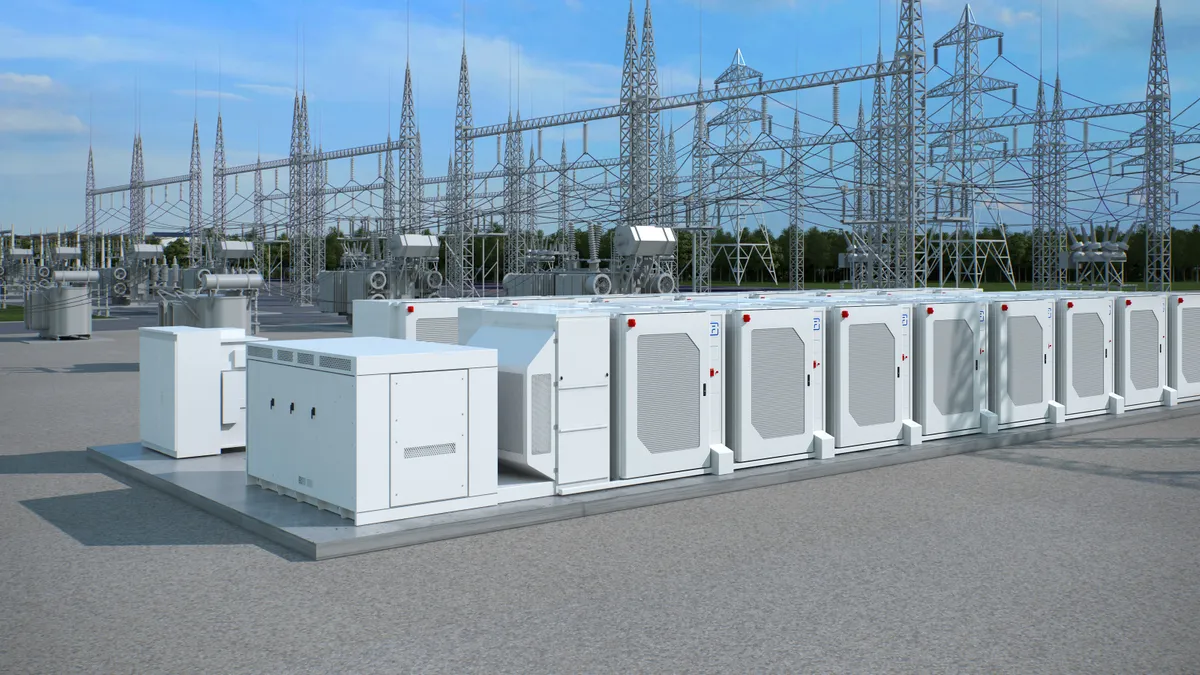Dive Brief:
- Energy storage company Fluence filed paperwork with the Securities and Exchange Commission and will seek an initial public offering (IPO), the company announced Tuesday.
- Fluence, a joint venture of manufacturing giant Siemens and electric power firm AES, has more than 3.4 GW of energy storage deployed or contracted across 29 global markets. The Virginia-based company released its sixth generation storage system last year, which includes its artificial intelligence-backed Fluence IQ platform.
- The proposed offering will be led by J.P. Morgan Securities, Morgan Stanley & Co, Barclays Capital and BofA Securities. If successful, Fluence will be listed on the Nasdaq Global Select Market under the symbol "FLNC."
Dive Insight:
Since launching in 2018, Fluence has made waves on the energy storage market, especially with its digital platform designed to maximize bidding on the wholesale markets so providers can take full advantage of renewable and storage assets.
In 2020, Fluence acquired AI firm Advanced Microgrid Solutions (AMS) to boost its management platform, which oversees some 2.5 GW on Australia’s National Electricity Market and several assets in California. In June 2020, the company announced an energy storage stack with its digital platform, an operating system and a standardized "cube" battery that can serve utility-scale projects or a project of up to 1 MW at an industrial site.
In December, the sovereign wealth fund of Qatar announced a $125 million investment in Fluence in exchange for ownership of about 12% of the company, valuing it at more than a billion dollars.
"We believe the global problem of climate change can only be tackled by leveraging the combined capabilities of technologists and investors from around the world," Fluence CEO Manuel Perez Dubuc wrote in a blog post about the investment.
As demand for energy storage rises, investor interest in battery startups has rapidly grown over the past year. Battery storage offers a solution to the intermittency concerns from reliance on wind and solar generation and the Energy Information Administration predicts that there could be some 10,000 MW of new storage installed between 2021 and 2023 as part of the grid transition.
Looking to capitalize on that growth, several storage startups have gone public, mostly through a special purpose acquisition company (SPAC). ESS, Stem, Eos Energy Storage and most recently Energy Vault have all entered the market through a SPAC, a faster strategy than an IPO.
At the same time, major investors have moved into the market. Chevron Technology Ventures and Bill Gates’ Breakthrough Energy Ventures joined a more than $60 million fundraising round for long-duration storage firm Malta and FlexGen announced a $150 million equity commitment from Apollo Global Management. Earlier this month, South Korea’s SK E&S Co. acquired New York-based Key Capture Energy, following the purchase of a California storage portfolio in 2019.
A June 2021 analysis from Wood Mackenzie predicts that the U.S. storage market could be worth $8.9 billion a year by 2026.













